How to choose a sunscreen
Finding the right sunscreen doesn’t have to be a challenge. Yes, there are numerous different options based on everything from your favorite activity to your skin type. However, in general, dermatologists recommend looking for the following things when choosing a sunscreen.
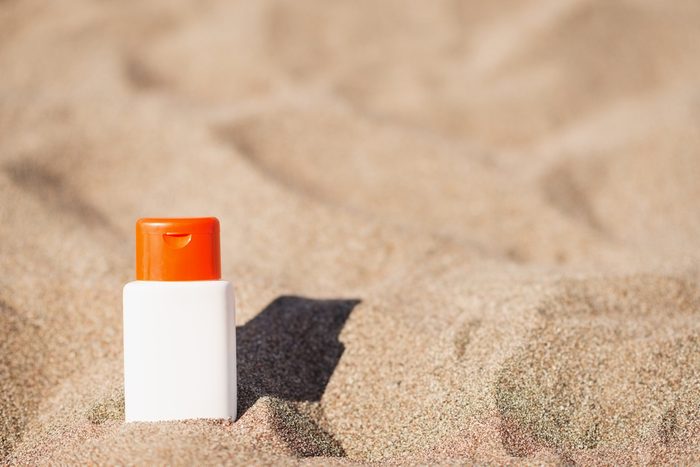
High SPF
Most dermatologists recommend using sun protection factor (SPF) of at least 30. “Generally, the amount of protection going from SPF 30 to 50 is about 3 percent more effective—from 95 percent to 97.5 percent,” says surgical oncologist James Lewis, MD, director of the Melanoma and Soft Tissue Tumor Service at the University of Tennessee Medical Center.
Most people aren’t perfect when applying sunscreen, so it’s better to start with a higher number for extra coverage. “Any SPF less than 30 really doesn’t afford you the level of sun protection that you need,” says Deanne Mraz Robinson, MD, and president and co-founder of Modern Dermatology. (Be sure to avoid these 7 sunscreen mistakes.)
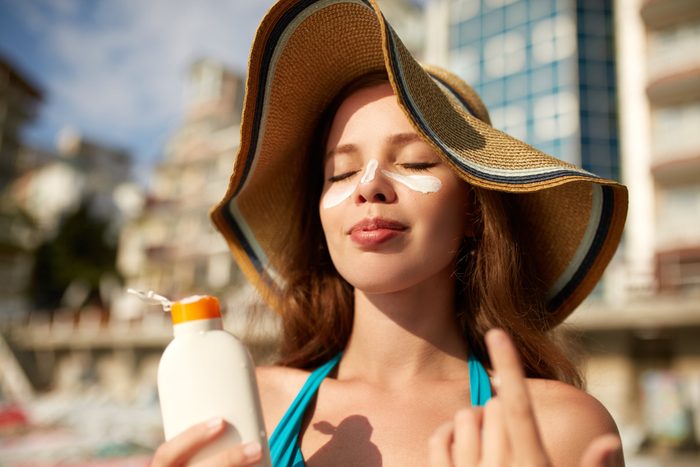
Broad-spectrum
The sun emits several types of ultraviolet light, so it’s important you protect against all of them. “The two most important things to look for on the label are ‘broad spectrum,’ which indicates the sunscreen protects against ultraviolet A (UVA) and ultraviolet B (UVB), and the SPF rating, which indicates how well it protects against UVB,” says Sejal Shah, MD, a dermatologist.
Most brands offer several types of sunscreen, so look for the words “broad spectrum” to make sure you’ve got a product worth buying. “The FDA has approved 17 different sunscreen filters, all with different wavelengths that they protect,” says Fayne Frey, MD, a dermatologist in West Nyack, New York. “For this reason, the vast majority of sunscreens are formulated with more than one sunscreen filter to cover a broader range of wavelengths. I tell my patients to use broad spectrum. It covers both UVB rays and a significant portion of the UVA spectrum.”

Chemical or physical
You can get your sun protection as either sunscreens or sunblocks. Each works differently to do the same thing. A chemical sunscreen limits sun damage using several different chemicals, says Stanley Kovak, MD, a cosmetic physician and owner of Kovak Cosmetic Center outside Chicago. “They work by absorbing UV rays into the tissue, and when ultraviolet rays pass into the skin, they change the rays into a longer wavelength which is less harmful so that it’s not so damaging.”
Physical or mineral sunblocks sit on the skin and reflect light away, he explains. Only two types of physical sunscreens have been FDA-approved—zinc oxide and titanium dioxide—and both might be good options for your skin type. “If you have more sensitive skin, a mineral sunscreen may be a better choice because it is less likely to cause skin reactions compared to chemical sunscreens,” Dr. Shah says. But there is a downside: Physical sunscreens tend to leave the skin with a white sheen and are often pricier than chemical versions, Dr. Frey says. A tinted mineral sunscreen is a good option to avoid the ghost-face look.
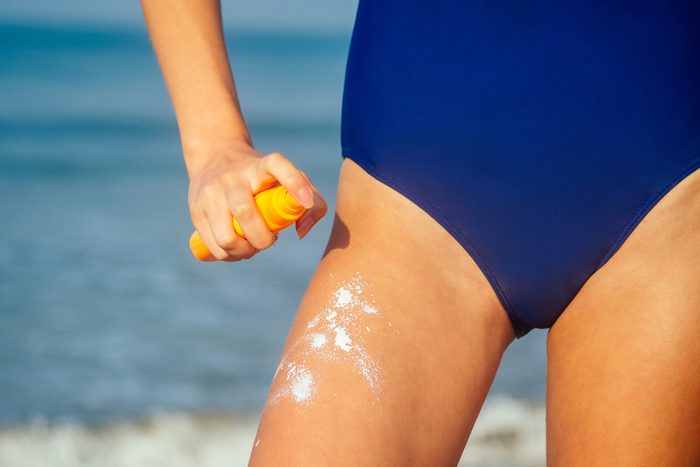
A comfortable formula
“Sunscreens come in a variety of formulations—creams, gels, lotions—so pick one that works for you,” Dr. Shah says. “For example, gels are great for oily skin or hairy areas, while creams are better for dry skin.” Some sunscreens feel sticky or create a film on your skin and won’t be very comfortable for everyday wearing, so pick one that you’ll actually follow through with wearing regularly—even when you aren’t spending hours outside.
“Daily SPF is essential,” says Adrienne Haughton, MD, director of clinical and cosmetic dermatology at Stony Brook Medicine in Commack, New York. “UVA comes through window glass and is present on a cloudy day. This is why many people in the United States develop skin cancers on the left side of their face and left arm based on exposure through the driver side window.”
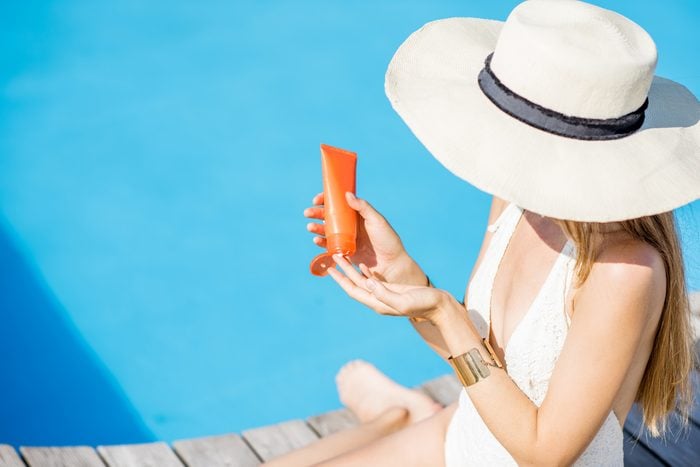
Water resistance
Even if you don’t plan to splash around in the water, reach for a water-resistant sunscreen—if you get sweaty, the water-resistance will keep you covered longer. “Water-resistant sunscreen is ideal,” says Dr. Frye. “Sunscreens can be tested for either 40 or 80 minutes of water-resistant protection, but reapplication of the sunscreen is necessary every two hours or after heavy perspiring, swimming, or just being wiped off with a towel.”
Whether it’s water-resistant or a physical sunscreen, you shouldn’t get lazy about reapplying, says dermatologist Tsippora Shainhouse, MD, clinical instructor at the University of Southern California. “Mineral sunscreen with zinc and titanium wipe off easily when you sweat or with friction from towels or clothing, so they, too, must be reapplied,” she says. (Check out these other sunscreen mistakes that will leave you burned.)
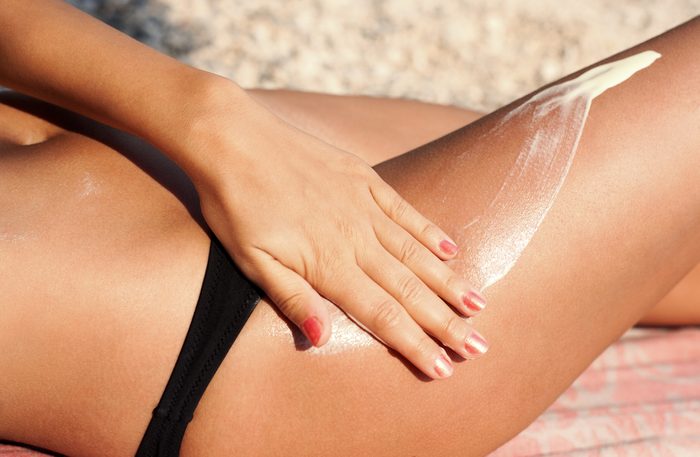
Antioxidants
The sun depletes your skin’s antioxidants, so if you can replace those healthy molecules while you protect against the sun’s rays, even better. “One of my favorite sunscreens, ISDIN Eryfotona Actinica, protects with an SPF of 50 from the physical sunscreen zinc oxide. It also contains the potent antioxidant vitamin E, which helps protect against environmental damage in addition to photolyase enzymes, which have been scientifically shown to repair UV-induced DNA damage,” Dr. Robinson says. “In essence, it is protecting and repairing at the same time. It’s a win-win.”
Sunscreens with antioxidants are more stable, too, says Patricia Wexler, MD, a dermatological surgeon and owner of Wexler Dermatology in New York City. But keep an eye out for one you should avoid: “Some SPFs have antioxidants added, like vitamin A, which could actually increase the risk of sun sensitivity and even skin cancer.”
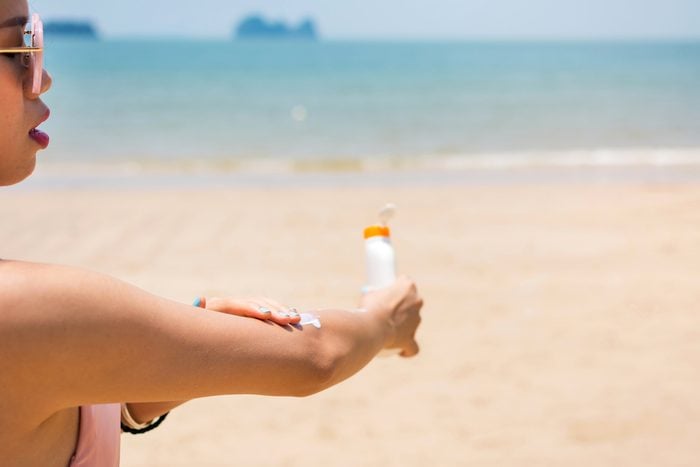
Good protection even for darker skin tones
If you think your darker skin protects you from the sun, you’re somewhat right—but that doesn’t mean you should skip the sunscreen. “People with darker skin types have more melanin that provides natural protection from the sun,” Dr. Haughton says. Darker skin can have an SPF of 13.4, compared to 3.4 in lighter skin, she says.
But that’s not an excuse to skimp on SPF. “Total SPF is not cumulative. If a person with fair skin and dark skin both put on a product with an SPF of 30, their maximum protection from UVB is still 30,” Dr. Haughton says. “This also goes for layering products that contain sunscreen; if your moisturizer has an SPF of 15 and your foundation has an SPF of 15, your total SPF is still 15.”
No matter what your skin tone, you’re risking skin damage and quicker aging in the sun, says Frank Wang, MD, an associate professor of clinical dermatology at Michigan Medicine.
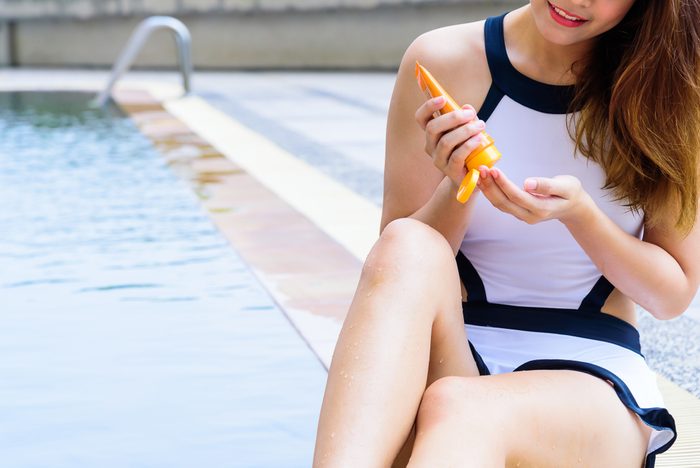
Lotions and creams
Some sunscreen formulas work better than others for maximum sun protection. “When you rub in cream sunscreens, it is easy to tell if you have covered your entire body,” says Hari Nadiminti, MD, a skin cancer micrographic surgeon at Summit Medical Group. “Spray sunscreens are convenient, but you often end up missing spots. You can also run the risk of inhaling chemicals. If you do use spray sunscreens, avoid the face or mouth.”
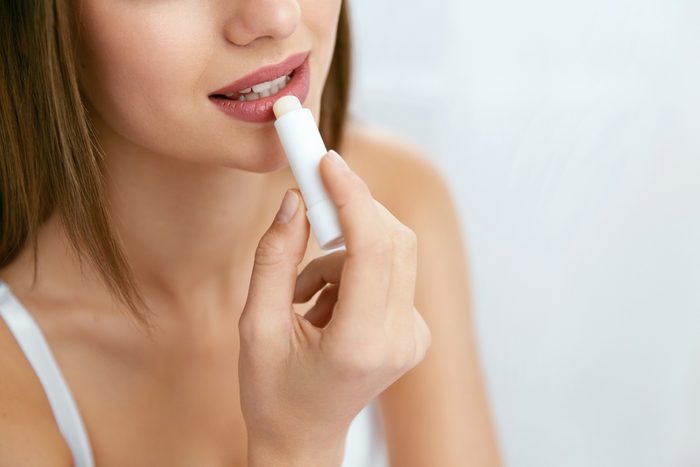
Sticks for lips
“Nose, ears, and lips are very important to protect and frequently forgotten,” says Adarsh Vijay Mudgil, MD, medical director of Mudgil Dermatology. You can use the same lotion for your face, ears, and nose. Just make sure you reapply more frequently to your face if you’re wiping or rubbing with a towel or clothing. Find a sunscreen stick designed for the lips to protect your kisser, says Dr. Mudgil. (Don’t miss these other critical spots most people forget when applying sunscreen.)
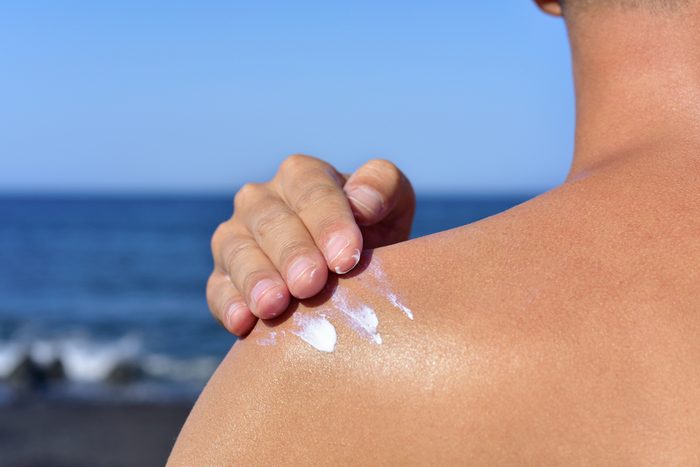
Tip: Work on your timing
The sun can impact your skin even if you haven’t been out for long, so it’s important you apply it before you leave the house or car. “Apply before going out into the sun and reapply frequently, every one to two hours, especially if you’re going into water or sweating,” says Dr. Lewis. And parents should apply this rule to little ones as well: If you wait, they might end up getting more than 30 minutes of unprotected sun time. Burning and sun damage can quickly happen in those brief minutes.
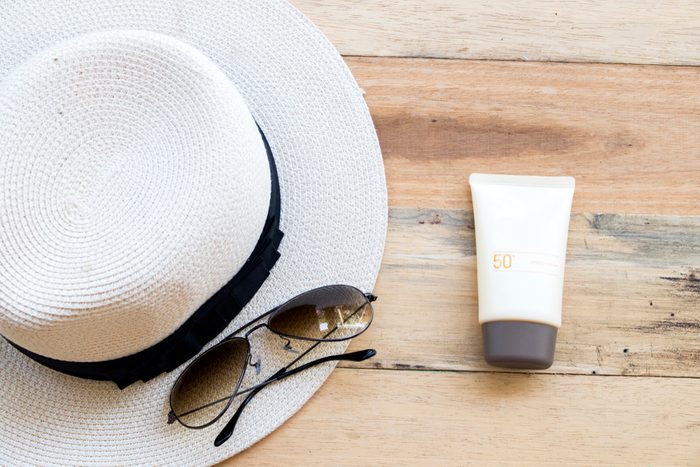
Tip: Don’t forget protective hats and glasses
You don’t have to leave sun protection to sunscreen alone, says. Dr. Lewis. “I recommend SPF clothing, especially for those with sensitive skin, and don’t forget to wear a hat and UV protection glasses,” he says. Look for sun-protective clothing, hats, glasses, and more to give your body better protection against obvious sun damage signs. Plus, you shouldn’t press your luck with sun time, says Dr. Nadiminti. “Sunscreen should not be your only line of defense. Even if you apply sunscreen perfectly, you should still limit your time outdoors,” he says. “Seek the shade, particularly during the hours of 10 a.m. and 4 p.m., when the sun is strongest. Cover up with long-sleeve shirts and lightweight pants, and wear a wide-brimmed hat to protect your face. Never intentionally tan.”
Next, check out the best polarized sunglasses.

